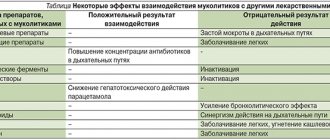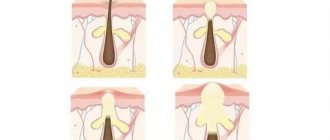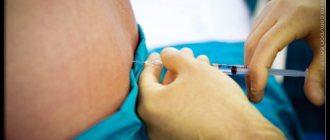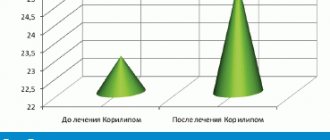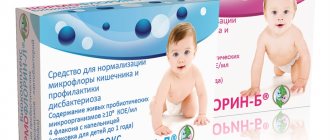Bacteriophage Pseudomonas aeruginosis (pseudomonas)
The drug is used for oral administration (oral), rectal administration, applications, irrigation, administration into wound cavities, vagina, uterus, nose, sinuses and drained cavities. Before use, the vial with the bacteriophage must be shaken and inspected. The preparation must be transparent and free of sediment.
Recommended dosage of the drug
| Age | Dose for 1 dose (ml) | |
| inside | in an enema | |
| 0-6 months | 5 | 5-10 |
| 6-12 months | 10 | 10-20 |
| from 1 year to 3 years | 15 | 20-30 |
| from 3 to 8 years | 15-20 | 30-40 |
| from 8 years and older | 20-30 | 40-50 |
Treatment of purulent-inflammatory diseases with localized lesions should be carried out simultaneously both locally and by taking the drug orally 2-3 times a day 1 hour before meals from the first day of the disease for 7-20 days (according to clinical indications).
If chemical antiseptics were used to treat wounds before using the bacteriophage, the wound should be thoroughly washed with a sterile sodium chloride solution of 0.9%.
Depending on the nature of the source of infection, the bacteriophage is used:
- In the form of irrigation, lotions and tamponing in a volume of up to 200 ml, depending on the size of the affected area. In case of an abscess, after removing the purulent contents using a puncture, the drug is administered in an amount less than the volume of the removed pus. In case of osteomyelitis, after appropriate surgical treatment, 10-20 ml of bacteriophage is poured into the wound.
- When administered into cavities (pleural, articular and other limited cavities), up to 100 ml, after which capillary drainage is left, through which the bacteriophage is administered for several days.
- For cystitis, pyelonephritis, urethritis, the drug is taken orally. If the cavity of the bladder or renal pelvis is drained, the bacteriophage is injected through the cystostomy or nephrostomy 1-2 times a day, 20-50 ml into the bladder and 5-7 ml into the renal pelvis.
- For purulent-inflammatory gynecological diseases, the drug is administered into the cavity of the vagina and uterus in a dose of 5-10 ml once daily.
- For purulent-inflammatory diseases of the ear, throat, nose, the drug is administered in a dose of 2-10 ml 1-3 times a day. The bacteriophage is used for rinsing, washing, instilling, introducing moistened turundas (leaving them for 1 hour).
- For enteral infections and intestinal dysbiosis, the drug is taken orally 3 times a day 1 hour before meals. It is possible to combine double oral administration with a single rectal administration of a single age-specific dose of the bacteriophage in the form of an enema after bowel movement.
Use of bacteriophage in children (up to 6 months). For sepsis and enterocolitis in newborns, including premature babies, the bacteriophage is used in the form of high enemas (through a gas tube or catheter) 2-3 times a day in a dose of 5-10 ml. In the absence of vomiting and regurgitation, it is possible to use the drug by mouth. In this case, it is mixed with breast milk. A combination of rectal (in the form of high enemas) and oral (through the mouth) use of the drug is possible. The course of treatment is 5-15 days.
In case of recurrent course of the disease, repeated courses of treatment are possible. In order to prevent sepsis and enterocolitis during intrauterine infection or the risk of nosocomial infection in newborns, the bacteriophage is used in the form of enemas 2 times a day for 5-7 days.
In the treatment of omphalitis, pyoderma, and infected wounds, the drug is used in the form of applications twice daily (a gauze pad is moistened with a bacteriophage and applied to the umbilical wound or affected area of skin).
Bacteriophage Pseudomonas aeruginosa solution for internal external and local use fl 100ml
Compound
The drug is a sterile filtrate of phagolysate, active against the bacteria Pseudomonas aeruginosis (Pseudomonas aeruginosa).
Directions for use and doses
Pseudomonas aeruginosa bacteriophage (Pseudomonas aeruginosa) is used for the treatment and prevention of purulent-inflammatory diseases of various organs and enteral diseases caused by Pseudomonas aeruginosa, as well as dysbiosis:
- diseases of the ear, throat, nose, respiratory tract and lungs (inflammation of the sinuses, middle ear, sore throat, pharyngitis, laryngitis, tracheitis, bronchitis, pneumonia, pleurisy),
- surgical infections (purulent-complicated wounds, burns, abscess, phlegmon, boils, carbuncles, hidradenitis, panaritium, paraproctitis, mastitis, bursitis, osteomyelitis),
- urogenital infections (urethritis, cystitis, pyelonephritis, colpitis, endometritis, salpingoophoritis),
- enteral infections (gastroenterocolitis, cholecystitis, dysbacteriosis),
- generalized septic diseases,
- purulent-inflammatory diseases of newborns (omphalitis, pyoderma, conjunctivitis, gastroenterocolitis, sepsis, etc.),
- other diseases caused by Pseudomonas aeruginosa,
- for prophylactic purposes for the treatment of postoperative and newly infected wounds, as well as for the prevention of nosocomial infections for epidemic indications.
Best before date
Available with prescription
Conditions for dispensing from pharmacies
It is possible to use Pseudomonas aeruginosa bacteriophage in pregnant women and children as prescribed by a doctor in compliance with the dose. Pseudomonas aeruginosa liquid bacteriophage should be transparent and not contain sediment. The drug cannot be used if the integrity of the packaging and labeling is damaged, or the solution becomes cloudy. Storage after opening the bottle is not allowed.
Pharmacodynamics
Pseudomonas aeruginosa bacteriophage (Pseudomonas aeruginosis) is an immunobiological preparation, phage.
Use during pregnancy and breastfeeding
An important condition for effective phage therapy is the preliminary determination of the phage sensitivity of the pathogen. Depending on the nature of the source of infection, Pseudomonas aeruginosa bacteriophage is used: locally in the form of irrigation, lotions and tamponing, in the cavity - pleural, abdominal, articular, through a catheter into the bladder, into the cavity of the vagina, uterus, inside and rectally. The course of treatment is 5-15 days. In case of recurrent course of the disease, repeated courses of treatment are possible.
Locally in the form of irrigation, lotions and tamponing, taking into account the size of the affected area in an amount of 5-200 ml. Treatment of purulent-inflammatory diseases with localized lesions is advisable to carry out simultaneously both locally and through the mouth for 7-20 days. For purulent-inflammatory diseases of the ear, throat, nose, Pseudomonas aeruginosa bacteriophage is administered in a dose of 2-10 ml 1-3 times a day. The bacteriophage is used for rinsing, washing, instilling, introducing moistened turundas (leaving them for 1 hour). For abscesses, Pseudomonas aeruginosa bacteriophage is injected into the cavity of the lesion after puncture removal of the pus. The amount of the administered drug is slightly less than the volume of evacuated pus. When opening an abscess, a tampon generously moistened with Pseudomonas aeruginosa bacteriophage is inserted into the cavity. For boils and carbuncles, liquid pseudomonas bacteriophage is injected directly into the lesion or under the base of the infiltrate, as well as around it. Bacteriophage injections are made daily, every other day, depending on the reaction, in successively increasing doses: 0.5 ml for 1 injection, then 1 - 1.5 - 2 ml. A total of 3-5 injections are performed per treatment cycle.
For osteomyelitis, after appropriate surgical treatment, 10-20 ml of Pseudomonas bacteriophage is infused into the wound. Injection into the cavities - pleural, abdominal, articular, bladder, etc. - from 30 to 100 ml of Pseudomonas bacteriophage, after which the cavity is sutured or capillary drainage is left, through which the bacteriophage is reintroduced over several days. For purulent pleurisy, Pseudomonas aeruginosa bacteriophage is injected into the cavity after pumping out the pus in an amount of 50-100 ml. and more every other day, only 3-4 times.
For cystitis, pyelonephritis, urethritis. Through a catheter, Pseudomonas aeruginosa bacteriophage is injected into the bladder. If the cavity of the bladder or renal pelvis is drained, the bacteriophage is injected through the cystostomy or nephrostomy 1-2 times a day, 20-50 ml into the bladder and 5-7 ml into the renal pelvis. In this case, Pseudomonas aeruginosa bacteriophage is also prescribed orally. For purulent-inflammatory gynecological diseases, Pseudomonas aeruginosa bacteriophage is injected into the cavity of the vagina and uterus in a dose of 5-10 ml once daily. For intestinal forms of the disease, diseases of internal organs, and dysbacteriosis, Pseudomonas aeruginosa bacteriophage is used orally and in an enema. It is given orally 3 times a day on an empty stomach 1 hour before meals; in the form of enemas they are prescribed 1 time per day instead of one oral dose. For sepsis and enterocolitis in newborns, including premature babies, Pseudomonas aeruginosa bacteriophage is used in the form of high enemas (through a gas tube or catheter) 2-3 times a day. In the absence of vomiting and regurgitation, it is possible to use the drug by mouth. In this case, it is mixed with breast milk. A combination of rectal (in enemas) and oral (by mouth) use of Pseudomonas aeruginosa bacteriophage is possible.
In the treatment of omphalitis, pyoderma, and infected wounds, Pseudomonas aeruginosa bacteriophage is used in the form of applications, twice a day, a gauze cloth is moistened with the bacteriophage and applied to the umbilical wound or to the affected area of the skin. In order to prevent sepsis and enterocolitis during intrauterine infection or the risk of nosocomial infection in newborns, Pseudomonas aeruginosa bacteriophage is used in the form of enemas 2 times a day for 5-7 days. Combination treatment can be performed in combination with antibiotics. Treatment with Pseudomonas bacteriophage does not exclude the use of other medications.
Overdose
An important condition for effective phage therapy is the preliminary determination of the phage sensitivity of the pathogen. Depending on the nature of the source of infection, Pseudomonas aeruginosa bacteriophage is used: locally in the form of irrigation, lotions and tamponing, in the cavity - pleural, abdominal, articular, through a catheter into the bladder, into the cavity of the vagina, uterus, inside and rectally. The course of treatment is 5-15 days. In case of recurrent course of the disease, repeated courses of treatment are possible.
Locally in the form of irrigation, lotions and tamponing, taking into account the size of the affected area in an amount of 5-200 ml. Treatment of purulent-inflammatory diseases with localized lesions is advisable to carry out simultaneously both locally and through the mouth for 7-20 days. For purulent-inflammatory diseases of the ear, throat, nose, Pseudomonas aeruginosa bacteriophage is administered in a dose of 2-10 ml 1-3 times a day. The bacteriophage is used for rinsing, washing, instilling, introducing moistened turundas (leaving them for 1 hour). For abscesses, Pseudomonas aeruginosa bacteriophage is injected into the cavity of the lesion after puncture removal of the pus. The amount of the administered drug is slightly less than the volume of evacuated pus. When opening an abscess, a tampon generously moistened with Pseudomonas aeruginosa bacteriophage is inserted into the cavity. For boils and carbuncles, liquid pseudomonas bacteriophage is injected directly into the lesion or under the base of the infiltrate, as well as around it. Bacteriophage injections are made daily, every other day, depending on the reaction, in successively increasing doses: 0.5 ml for 1 injection, then 1 - 1.5 - 2 ml. A total of 3-5 injections are performed per treatment cycle.
For osteomyelitis, after appropriate surgical treatment, 10-20 ml of Pseudomonas bacteriophage is infused into the wound. Injection into the cavities - pleural, abdominal, articular, bladder, etc. - from 30 to 100 ml of Pseudomonas bacteriophage, after which the cavity is sutured or capillary drainage is left, through which the bacteriophage is reintroduced over several days. For purulent pleurisy, Pseudomonas aeruginosa bacteriophage is injected into the cavity after pumping out the pus in an amount of 50-100 ml. and more every other day, only 3-4 times.
For cystitis, pyelonephritis, urethritis. Through a catheter, Pseudomonas aeruginosa bacteriophage is injected into the bladder. If the cavity of the bladder or renal pelvis is drained, the bacteriophage is injected through the cystostomy or nephrostomy 1-2 times a day, 20-50 ml into the bladder and 5-7 ml into the renal pelvis. In this case, Pseudomonas aeruginosa bacteriophage is also prescribed orally. For purulent-inflammatory gynecological diseases, Pseudomonas aeruginosa bacteriophage is injected into the cavity of the vagina and uterus in a dose of 5-10 ml once daily. For intestinal forms of the disease, diseases of internal organs, and dysbacteriosis, Pseudomonas aeruginosa bacteriophage is used orally and in an enema. It is given orally 3 times a day on an empty stomach 1 hour before meals; in the form of enemas they are prescribed 1 time per day instead of one oral dose. For sepsis and enterocolitis in newborns, including premature babies, Pseudomonas aeruginosa bacteriophage is used in the form of high enemas (through a gas tube or catheter) 2-3 times a day. In the absence of vomiting and regurgitation, it is possible to use the drug by mouth. In this case, it is mixed with breast milk. A combination of rectal (in enemas) and oral (by mouth) use of Pseudomonas aeruginosa bacteriophage is possible.
In the treatment of omphalitis, pyoderma, and infected wounds, Pseudomonas aeruginosa bacteriophage is used in the form of applications, twice a day, a gauze cloth is moistened with the bacteriophage and applied to the umbilical wound or to the affected area of the skin. In order to prevent sepsis and enterocolitis during intrauterine infection or the risk of nosocomial infection in newborns, Pseudomonas aeruginosa bacteriophage is used in the form of enemas 2 times a day for 5-7 days. Combination treatment can be performed in combination with antibiotics. Treatment with Pseudomonas bacteriophage does not exclude the use of other medications.


